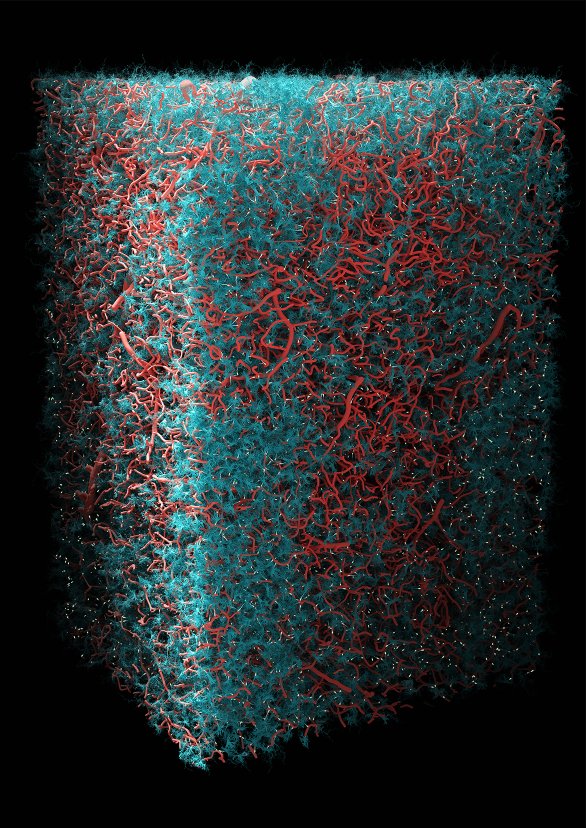Engineering and research
Engineering history
2006-2014: full-stack interactive applications, from database modeling to web services and front end using patterns such as MVC.
2014-2019: a peer-reviewed Python library for automated and detailed 3D reconstruction of neurons, glia and blood vessels.
2019-2020: a large-scale and curvature-dependent neuronal circuit builder + a neuroscientific graph visualization tool.
2020: computer vision-based mesh projection tool in Python for computational biology.
Open source contribution
C++ mod of Blender and Cycles for large-scale graphs viz, see repository on github.com/nantille
2020-2021: IBL Viewer, an interactive GPU-accelerated visualization tool for histological and physiological data analysis as well as experimental planning, integrated to the International Brain Laboratory back end.
Digital reconstruction of curvature-based circuits of neural cells
Inspired by previous collaborations with neuroscientists, I did a literature review on neuroscience and gathered relevant biological data such as neuronal traces/skeletons. Then I developed a model based on the curvature of the white and grey matter that populates relevant neocortical regions with densities and cell types found in literature. I used this solution to produce the first detailed mural artworks of the temporal lobe in the human brain for the "Fascinating Brain" exhibition, Berlin.


Optimization for large-scale visualisation of splines
In this exploration, I modified the C++ sources of Cycles raytracer in order to use the hair primitives for graph or tree datasets.
If you would like to use it, checkout the repo and compile Blender according to the official documentation. The functionality is pretty simple to use and this has been tested on Linux and MacOS in production as well as on super computers with Docker and Ubuntu.
- Repository for Blender 2.8
- About compiling Blender
Applied to neuroscience, my modification of Cycles render engine turned out to be a necessary optimization for the visualization of large-scale datasets such as this network of capillaries surrounded by astrocytes. This required 205GB of RAM to fit tens of thousands of unique cells each made of hundreds of branches.
The illustration was presented by Eleftherios Zisis on a poster about his research at SfN [Society for Neuroscience] 2017.
These results inspired the engineers in BBP visualization team to use the same technique.
Blue Brain Project/EPFL © 2015-2019. All rights reserved.Unless indicated otherwise, images on this page are copyrighted to Blue Brain Project/EPFL © 2015-2019. All rights reserved.